Babylonian Captivity Of The Papacy
 From Nwe
From Nwe 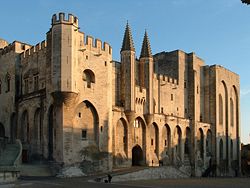
In the history of the Roman Catholic Church, the Avignon Papacy was the period from 1309 to 1377 during which seven popes, all French, resided in Avignon: In 1378, Gregory XI moved the papal residence back to Rome and died there. Due to a dispute over the subsequent election, a faction of cardinals set up an antipope back in Avignon. This was the period of difficulty from 1378 to 1417 which Catholic scholars refer to as the "Western schism" or, "the great controversy of the antipopes" (also called "the second great schism" by some secular and Protestant historians), when parties within the Catholic church were divided in their allegiances among the various claimants to the office of pope. The Council of Constance in 1417 finally resolved the controversy. The cause of the move to Rome was the political insecurity of the situation in Rome. Without a strong temporal ruler, such as the King of France, the Pope was vulnerable. On the one hand, the move to Avignon placed the Pope in a safer environment and facilitated his role on the international stage. On the other hand, it emphasized the papacy’s indebtedness to the French king and compromised its claim to be the superior authority. At a time when many dissident Christians wanted a return to a simpler life-style, too, the life-style of the Avignon popes became more and more lavish, so much so that when Pope Urban V moved to back to Rome, the Cardinals complained, and he returned to Avignon.
Background
The Papacy in the Late Middle Ages had a major secular role in addition to its spiritual role. The conflict between the Pope and the Holy Roman Emperor basically boiled down to a dispute over which of them was the leader of Christendom in secular matters. In the early fourteenth century, the papacy was well past the prime of its secular rule – its peak of importance had passed in the twelfth and thirteenth century|. The success of the early crusades added greatly to the prestige of the Popes as secular leaders of Christendom, with monarchs like the Kings of England, France, and even the Emperor merely acting as Marshals for the popes, and leading "their" armies. One exception to this was Frederick II, who was twice excommunicated by the Pope during one crusade. Frederick II ignored this and was rather successful in the Holy Land.
Beginning with Clement V, elected 1305, all popes during the residence of the papacy in Avignon were French. However, this simple fact tends to overestimate this influence. Southern France at that time had a quite independent culture from Northern France, where most of the advisers to the King of France came from. Arles was at that time still independent, formally a part of the Holy Roman Empire. The literature produced by the "troubadour" age in the Languedoc area, is unique and strongly distinguishes its culture from that of the Royal circles in the north. Even in terms of religion, the South produced its own variant, the Cathar movement, which was ultimately declared heretical, as it clashed with doctrines of the Church. But this merely demonstrated a strong sense of independence in Southern France.
A stronger source of influence was the move of the Roman Curia from Rome to Avignon in 1305. Following the impasse during the previous conclave and to escape from the infighting between the powerful families that produced former Popes, such as the Colonna and the Orsini, the Church looked for a safer place and found it in Avignon, which was surrounded by the lands of the papal fief of Comtat Venaissin and by a small papal enclave to the east. They remained part of the Pontifical States up to the French Revolution, becoming part of France in 1791. Italy at the time was in a state of “anarchy” and Rome itself was a vulnerable place to live for the leader of the Christian world. [1] Formally it was part of Arles, but in reality it was under the strong influence of the French king. During the time in Avignon the Papacy adopted many features of the Royal court: the life-style of its cardinals was more reminiscent of princes than clerics; more and more French cardinals, often relatives of the ruling pope, took key positions; and the closeness of French troops was a constant reminder of where the secular power lay, with the memory of Boniface VIII still fresh.
One of the most damaging developments for the Church grew directly out of its successful reorganization and centralization of the administration under Clement V and John XXII. The Papacy now directly controlled the appointments of benefices, abandoning customary election processes to secure this considerable income. Many other forms of payment brought riches to the Holy See and its cardinals: Tithes, a ten percent tax on church property, annates, the income of the first year after filling a position such as bishop, special taxes for crusades that never happened, and all forms of dispensation, from entering benefices without basic qualifications such as literacy to requests by a converted Jew to visit his unconverted parents. Popes such as John XXII, Benedict XII and Clement VI reportedly spent fortunes on expensive wardrobe and at banquets, silver and gold plates were used. Overall the public life of leading church members resembled more those of princes, rather than members of the clergy. This splendor and corruption from the head of the church found its way to the lower ranks: when a bishop had to pay up to a year's income for gaining a benefice, he sought for similar ways of raising this money from his new office. This was put to an extreme by the pardoners who sold absolutions for all kinds of sins to the poor. Where pardoners were hated, but needed to redeem one's soul, the friars who failed to follow a Christian path by failing on the vows of chastity and poverty were despised. This sentiment strengthened movements calling for a return to absolute poverty, relinquishment of all personal and church belongings, and preaching as the Lord and his disciples did. For the church, an institution embedded in the secular structure and its focus on property, this was a dangerous development and in the early fourteenth century most of these movements were declared heretical. These included the Fraticelli and Waldensian movements in Italy, and the Hussite movement in Bohemia (inspired by John Wycliff in England). Furthermore, the display of wealth by the upper ranks of the church, which was in contrast to the common expectation of poverty and strict adherence to principles, was used by the Papacy's enemies in raising charges against the popes: King of France Philippe employed the strategy, as did Emperor Louis IV. In his conflict with the latter, Pope John XXII excommunicated two leading philosophers, Marsilius of Padua and William Ockham, who were outspoken critics of the Papacy, and who had found refuge with Ludwig of Bavaria in Munich. In response William Ockham charged the pope with seventy errors and seven heresies.
Suppression of the Templars
The proceedings against the Templars in the Council of Vienne represent an episode of this time, reflecting the powers and their relationship. In 1314 the collegium at Vienne summoned to rule over the Templars. The council, overall unconvinced about the guilt of the order as a whole, was unlikely to condemn the entire order based on the scarce evidence brought forward. Exerting massive pressure, in order to gain part of the substantial funds of the order, the king managed to get the ruling he wanted. Pope Clement V ordered by decree the suppression of the order. In the cathedral of St-Maurice in Vienne, the King of France, and his son the King of Navarre, were sitting next to him, when he issued the decree. Under pain of excommunication, no one was allowed to speak at that occasion, except when asked by the Pope. The Templars who appeared in Vienne to defend their order, were not allowed to present their case: originally cardinals of the collegium ruled that they should be allowed to raise a defense, only after the arrival of the King of France personally in Vienne, putting pressure on the collegium, the decision was revised.
The Papacy in the fourteenth century
the Popes and the king of France
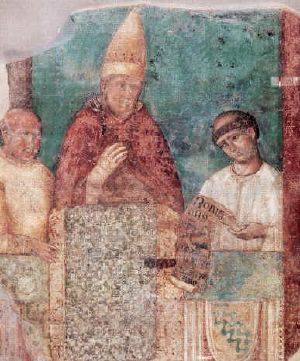
The beginning of the century, that would later be characterized by calamities such as the Black Death and the Hundred Years' War between the two major powers in Europe, saw a Papacy apparently at the height of its power. Pope Boniface VIII (1294-1303, born Benedict Caetani), an experienced politician sometimes described as brusque and arrogant, was a ferocious proponent of the Universal Sovereignty of the Papacy over all Christendom, as stated in the eleventh century Dictatus Papae. The concrete issue that sparked conflict with King Philip IV The Fair of France was the question whether secular lords were allowed to tax the clergy. In his bull Clericis Laicos (1296), Boniface VIII prohibited any taxation on church property except by the Papacy or the payment of such taxes. But only one year later he granted Philip IV the right to raise taxes on the clergy in cases of emergency. For his part, Philip saw himself as a "priest-king," and the bishops and clergy as servants of the crown. [2] The great success of the Jubilee Year 1300 (it is reported that up to 2 million pilgrims visited Rome) considerably strengthened the prestige of the Papacy, brought funds to Rome and led the Pope to grossly overestimate his temporal powers. After the arrest of the Bishop of Pamiers by Philip IV of France, the Pope issued the bull Salvator Mundi, retracting all privileges granted to the French king by previous popes, and a few weeks later Ausculta fili with charges against the king, summoning him before a council to Rome. In a bold assertion of Papal sovereignty, Boniface declared that "God has placed us over the Kings and Kingdoms." In response, Philip wrote "Your venerable stupidness may know, that we are nobody's vassal in temporal matters," and called for a meeting of the Estates General, a council of the lords of France, who supported his position. The King of France issued charges of sodomy, simony, sorcery, and heresy against the pope and summoned him before the council. The pope's response was the strongest affirmation to date of papal sovereignty. In Unam Sanctam (November 18, 1302), he decreed that "it is necessary to salvation that every human creature be subject to the Roman pontiff." He was preparing a bull that would excommunicate the King of France and put the interdict over France, and to depose the entire clergy of France, when in September of 1303, William Nogaret, the strongest critic of the Papacy in the French inner circle, led a delegation to Rome, with intentionally loose orders by the king to bring the pope, if necessary by force, before a council to rule on the charges brought against him. Nogaret coordinated with the cardinals of the Colonna family, long standing rivals against whom the pope had even preached a crusade earlier in his Papacy. In 1303 French and Italian troops attacked the pope in Anagni, his home town, arresting the pope himself. He was freed three days later by the population of Anagni. However, Boniface VIII, then 68 years of age, was deeply shattered by this attack on his own person and died a few weeks later.
Cooperation
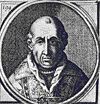
The death of Pope Boniface deprived the Papacy of its most able politician who could hold his ground against the secular power of the king of France. After the conciliatory Papacy of Benedict XI (1303-1304), Clement V (1305-1314) became the next pontiff. He was born in Gascony, in southern France, but not directly connected to the French court. He owed his election to the French clerics. He decided against moving to Rome and established his court in Avignon. In this situation of dependency on the powerful neighbors in France, three principles characterized the politics by Clement V: the suppression of the heretic movements (such as the Cathars in southern France); the reorganization of the internal administration of the church; and the preservation of an untainted image of the church as the sole instrument of God's will on earth. The latter was directly challenged by Philip IV when he pushed for a trial against his former adversary, Pope Boniface VIII, for alleged heresy. Exerting strong influence on the cardinals of the collegium, this could mean a severe blow to the church's authority. And much of Clement's politics was designed to avoid such a blow, which he finally did. However, the price was concessions on various fronts; despite strong personal doubts, in the end he pushed for proceedings against the Templars, and he personally ruled to suppress the order.
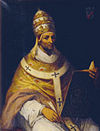
One important issue during the Papacy of John XXII (born Jaques Dueze in Cahors, and previously Archbishop in Avignon), was his conflict with Louis IV, Holy Roman Emperor. The latter refuted the right of the pope to install the Emperor by coronation. He resorted to a similar tactic as King of France Philip earlier and summoned the nobles of Germany to back his decision. Marsilius of Padua gave the justification of this secular supremacy over the lands in the Holy Roman Empire. This conflict with the Emperor, often fought out in expensive wars, drove the Papacy even more into the arms of the French king.

Pope Benedict XII (1334-1342), born Jaques Fournier in Pamiers, was previously active in the inquisition against the Cathar movement. In contrast to the rather bloody picture of the inquisition in general, he was reported to be very careful about the souls of the examined, taking a lot of time in the proceedings. His interest in pacifying southern France was also motivation for mediating between the king of France and the King of England, before the outbreak of the Hundred Years' War.
Submission
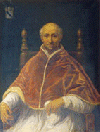
Under Pope Clement VI (1342-1352) the French interests started dominating the Papacy. Clement VI had been Archbishop of Rouen and advisor to Philippe IV before, so his links to the French court were much stronger than those of his predecessors. At some point he even financed French war efforts out of his own pockets. He reportedly loved luxurious wardrobe and under his rule the extravagant life style in Avignon reached new heights. Clement VI is also the pope who reigned during the Black Plague. This epidemic swept through Europe between 1347-1350, and is believed to have killed about one third of Europe's population.
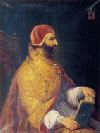
Pope Innocent VI (1352-1362), born Etienne Aubert, was less partisan than Clement VI. He was keen on establishing peace between France and England, having worked to this end in papal delegations in 1345 and 1348. His gaunt appearance and austere manners commanded higher respect in the eyes of nobles at both sides of the conflict. However, he was also indecisive and impressionable, already an old man when being elected Pope. In this situation, the King of France managed to influence the Papacy, although papal legates played key roles in various attempts to stop the conflict. Most notably in 1353 the Bishop of Porto, Guy de Boulogne, tried to set up a conference. After initial successful talks the effort failed, largely due to the mistrust from English side over Guy's strong ties with the French court. In a letter Innocent VI himself wrote to the Duke of Lancaster: "Although we were born in France and although for that and other reasons we hold the realm of France in special affection, yet in working for peace we have put aside our private prejudices and tried to serve the interests of everyone."
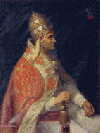
With Pope Urban V (1362-1370) the control of the French court over the Papacy became more direct. Urban V himself is described as the most austere of the Avignon popes after Benedict XII and probably the most spiritual of all. However, he was not a strategist and made substantial concessions to the French crown especially in finances, a crucial issue during the war with England. In 1369 Pope Urban V supported the marriage of Philip the Bold of Burgundy and Margaret of Flanders, rather than giving dispensation to one of Edward III's sons to marry Margaret. This clearly showed the partisanship of the Papacy, and correspondingly the respect of the church dropped. Urban actually moved to Rome but yielded to his Cardinals’ desire to return to the comfort of Avignon. [3]
Schism: The War of the Eight Saints
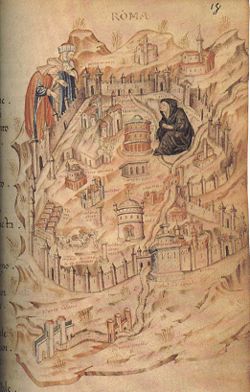
The most influential decision in the reign of Pope Gregory XI (1370-1378) was the return to Rome in 1378. Although the Pope was French born and still under strong influence by the French King, the increasing conflict between factions friendly and hostile to the Pope posed a threat to the Papal lands and to the allegiance of Rome itself. When the Papacy established an embargo against grain exports during a food scarcity 1374/1375, Florence organized several cities into a league against the Papacy: Milan, Bologna, Perugia, Pisa, Lucca and Genoa. The papal legate, Robert de Geneva, a relative to the House of Savoy, pursued a particularly ruthless policy against the league to re-establish control over these cities. He convinced Pope Gregory to hire Breton mercenaries. To quell an uprising of the inhabitants of Cesena he hired John Hawkwood and had the majority of the people massacred (between 2500 and 3500 people were reported dead). Following such events opposition against the Papacy strengthened. Florence came in open conflict with the Pope, a conflict called "the war of the eight saints" in reference to the eight Florentine councillors who were chosen to orchestrate the conflict. The entire city of Florence was excommunicated and as reply the export of clerical taxes was stopped. The trade was seriously hampered and both sides had to find a solution. In his decision about returning to Rome, the Pope was also under the influence of Catherine of Siena, later canonized, who preached for a return to Rome.
The schism itself was finally ended by a series of councils up to 1417. The establishment of the church councils, with the power to decide over the position of Pope, was one of the main outcomes of the schism. However, it did not survive long beyond 1417.
Criticism
Negative
The period has been called the "Babylonian captivity" of the popes. When and where this term originated is uncertain. Petrarch, in a [4] written during his stay at Avignon, described Avignon of that time as the "Babylon of the west," referring to the worldly practices of the church hierarchy. The term arose in 1350 from Petrarch's letters On the Papal Court at Avignon. The nickname is polemical, in that it refers to the claim by critics that the prosperity of the church at this time was accompanied by a profound compromise of the Papacy's spiritual integrity, especially in the alleged subordination of the powers of the Church to the ambitions of the French kings. As noted, the "captivity" of the popes at Avignon lasted about the same time as the exile of the Jews in Babylon, making the analogy convenient and rhetorically potent. The Avignon papacy has been—and is often today—depicted as being totally dependent on the French kings, and sometimes as even being treacherous to its spiritual role and its heritage in Rome.
Almost a century and a half later, Protestant reformer Martin Luther wrote his treatise On the Babylonian Captivity of the Church (1520), but that had nothing to do with the Western Schism or papacy in Avignon.
Positive
On the other hand, the move out of Italy and away from Rome “had the effect of making the pope more of an international figure, more the pastor of Europe than the pastor of the Italians.” “The Popes at Avignon,” Chadwick continues, “were not bad men and had a perfectly good reason for wanting to live there” and in fact when they did eventually return to Rome it was for the same reason they had initially left it. That is, they were no longer safe in Avignon, “France was in chaos because of the Hundred Years’ War with England, and Avignon was threatened by bands of undisciplined soldiers.” [5]. Chadwick notes, though, that the “Avignon palace still looks more like a fort than a home.” When the Popes did return to Rome, it was also because the only way they could hope to “hold on to their historic base in Italy was to go back there, however uncomfortable it was likely to be.”
Summary
The relationship between the Papacy and France changed drastically over the course of the fourteenth century. Starting with open conflict between Pope Boniface VIII and King Philippe IV of France, it turned to cooperation from 1305 to 1342, and finally to a Papacy under strong influence by the French throne up to 1378. Such partisanship of the Papacy was one of the reasons for the dropping esteem for the institution, which in turn was one of the reasons for the schism from 1378-1417. In the period of the Schism, the power struggle in the Papacy became a battlefield of the major powers, with France supporting the Pope in Avignon and England supporting the Pope in Rome. At the end of the century, still in the state of schism, the Papacy had lost most of its direct political power, and the nation states of France and England were established as the main powers in Europe.
Overall, it seems an exaggeration to characterize the Papacy as a puppet of the French throne. Even during its Avignon period, 1305 - 1378, the Papacy always pursued its own goals of uniting Christian lords (for example by mediating between France and England) and to uphold the position of the Church (for example by preventing charges of heresy against Boniface VIII made by King Philippe). Only in later times, when a strong French King faced a weak pope, the Papacy made significant concessions to the French king, as under the most French-friendly Pope Urban V who was pressured by the King of France. The basis for exerting such pressure can be found in the changed balance of power in the fourteenth century. The claim of the Papacy for universal sovereignty, reiterated since Gregory VII's Dictatus papae and championed by Boniface VIII at the beginning of the century, was impossible to uphold in the face of Scholastic movements and the influential works of Marsilius of Padua and William of Ockham. The administrative reorganization beginning with Clement V was successful in bringing funds to the Holy See. However, the focus on administrative and juristic issues characterized the entire Avignon Papacy and consequently it lost much respect among lower nobility and common people, who were more sympathetic to religious orders vowed to poverty rather than to a church hierarchy where cardinals often lived lives of Princes.
List of Avignon Popes
- Pope Clement V: 1305–1314
- Pope John XXII: 1316–1334
- Pope Benedict XII: 1334–1342
- Pope Clement VI: 1342–1352
- Pope Innocent VI: 1352–1362
- Pope Urban V: 1362–1370
- Avignon Pope Clement VII: 1378–1394
- Avignon Pope Benedict Benedict XIII: 1394–1423 (expelled from Avignon in 1403)
Notes
- ↑ Owen Chadwick. A History of Christianity. (NY: Barnes & Nobles, 1995), 175
- ↑ Stephen Howarth. The Knights Templar: The Essential History. (Marboro Books, [1982] reprint 1991), 254. The French king was seen as "semi-divine, a being apart from ordinary mortals: his touch, reputedly, could cure disease. Louis IX, Philip's grandfather, had taken this the furthest, uniting power and piety and laying the foundation of a political theocracy, a nation in which God's law was paramount, interpreted and executed by the king alone," 252
- ↑ E. R. Chambers. The Bad Popes. (Dorset Press, [1969] 2003. ISBN 9780880291163), 133
- ↑ Petrarch,letter to a friend 1340-1353. Medieval Sourcebook, Fordham University. Retrieved March 29, 2008.
- ↑ Chadwick, 175-176
References
ISBN links support NWE through referral fees
- Chadwick, Owen. A History of Christianity. NY: Barnes & Nobles, 1995. ISBN 0760773327
- Chambers, E. R. The Bad Popes. Dorset Press, [1969] 2003. ISBN 9780880291163
- Housley, Norman. The Avignon Papacy and the Crusades, 1305-1378. Oxford [Oxfordshire]: Clarendon Press, 1986. ISBN 9780198219576
- Howarth, Stephen. The Knights Templar: The Essential History. Marboro Books, [1982] 1991. ISBN 9780880296632
- Petrarch, letter to a friend 1340-1353. Medieval Sourcebook, Fordham University. Retrieved June 20, 2019.
- Renouard, Yves. The Avignon Papacy, 1305-1403. [Hamden, Conn.]: Archon Books, 1970. ISBN 0571091598
- Walker, Williston. A History of the Christian Church. New York: Scribner, 1985 ISBN 9780684184173
Credits
New World Encyclopedia writers and editors rewrote and completed the Wikipedia article in accordance with New World Encyclopedia standards. This article abides by terms of the Creative Commons CC-by-sa 3.0 License (CC-by-sa), which may be used and disseminated with proper attribution. Credit is due under the terms of this license that can reference both the New World Encyclopedia contributors and the selfless volunteer contributors of the Wikimedia Foundation. To cite this article click here for a list of acceptable citing formats.The history of earlier contributions by wikipedians is accessible to researchers here:
- Babylonian Captivity of the Papacy history
The history of this article since it was imported to New World Encyclopedia:
- History of "Babylonian Captivity of the Papacy"
Note: Some restrictions may apply to use of individual images which are separately licensed.
↧ Download as ZWI file | Last modified: 02/04/2023 01:34:37 | 76 views
☰ Source: https://www.newworldencyclopedia.org/entry/Babylonian_Captivity_of_the_Papacy | License: CC BY-SA 3.0
 ZWI signed:
ZWI signed: KSF
KSF